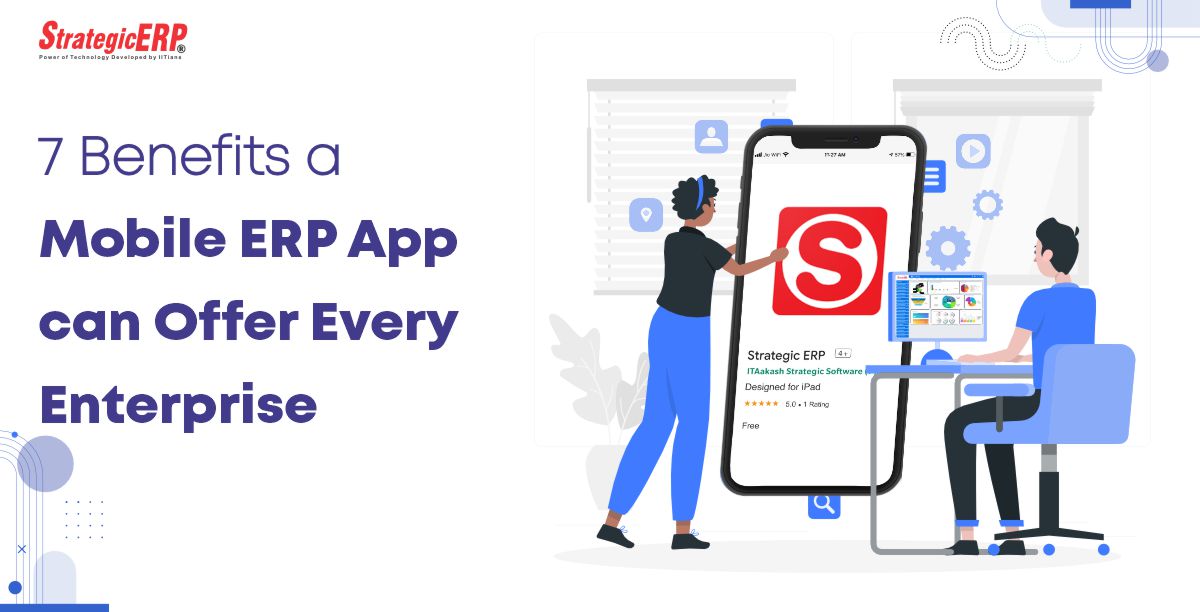App ERP is revolutionizing the way businesses operate by streamlining processes and enhancing productivity. These applications integrate various functions within an organization, providing a centralized platform to manage resources, information, and workflows efficiently. As we delve into the world of ERP, we will explore its historical evolution, core components, and the significant advantages it brings to modern enterprises.
Moreover, understanding the right ERP application for your business is crucial to achieve desired outcomes. This involves evaluating different vendors, assessing software suitability, and being aware of the potential challenges during implementation. By equipping organizations with the right tools and knowledge, ERP solutions can pave the way for sustainable growth and operational excellence.
Understanding ERP Applications
Enterprise Resource Planning (ERP) applications serve as integrated software solutions that manage and streamline business processes across an organization. By centralizing data and automating workflows, these systems enhance efficiency, reduce operational costs, and improve decision-making through better data visibility. This section delves into the core functions, historical evolution, and key components of ERP applications, highlighting their significance in modern business environments.
Idempiere is a robust open-source ERP solution designed to cater to the needs of various businesses. By exploring idempiere , you can discover its features that facilitate efficient management of resources and processes. In addition, companies seeking comprehensive ERP solutions may also consider the benefits of compiere erp , which offers a flexible framework to enhance operational efficiency.
Core Functions of ERP Applications
ERP applications encompass a wide range of functionalities that support various business operations. The primary functions include financial management, supply chain management, human resources management, and customer relationship management. Each of these functions contributes to the holistic management of organizational resources, allowing for improved productivity and collaboration.
For businesses aiming to optimize their operations, compiere erp presents an ideal choice with its user-friendly interface and extensive functionalities. As you delve deeper into enterprise solutions, it is also worth examining idempiere , which provides innovative tools to streamline business processes and improve overall productivity.
- Financial Management: ERP systems integrate financial data from various departments, enabling real-time tracking of revenues, expenses, and profitability. This ensures accurate financial reporting and compliance with regulatory requirements.
- Supply Chain Management: By providing visibility into inventory levels, order processing, and logistics, ERP applications help organizations optimize their supply chain operations, reduce lead times, and enhance customer satisfaction.
- Human Resources Management: ERP solutions automate HR processes such as recruitment, payroll, and performance management, promoting better employee engagement and reducing administrative burdens.
- Customer Relationship Management: ERP applications facilitate effective management of customer interactions, sales processes, and marketing campaigns, leading to improved customer service and loyalty.
Historical Evolution of ERP Systems
The evolution of ERP systems traces back to the 1960s when organizations began adopting Material Requirements Planning (MRP) systems to manage manufacturing processes. Over the years, MRP evolved into MRP II, which integrated additional functions like finance and human resources. The term “ERP” was officially coined in the 1990s, as software vendors began offering integrated solutions that encompassed a broader range of business processes.
The advent of cloud computing in the 2000s further transformed ERP systems, allowing for greater accessibility and scalability, thereby enabling organizations of all sizes to leverage these powerful applications.
Key Components of an ERP Application Framework
An ERP application framework comprises several key components that work in unison to provide comprehensive business management solutions. Understanding these components is crucial for organizations seeking to implement or upgrade their ERP systems.
- Database Management System: A centralized database serves as the backbone of ERP applications, storing all relevant data securely and ensuring data integrity across different functions.
- Application Modules: Each application module corresponds to specific business functions—such as finance, HR, and supply chain—enabling tailored solutions that meet the unique needs of an organization.
- User Interface: A user-friendly interface is essential for ensuring ease of use, allowing employees to access necessary information and perform tasks efficiently.
- Integration Capabilities: ERP frameworks should possess robust integration capabilities to connect with other software applications and systems, facilitating seamless data exchange and communication.
“ERP applications are essential tools that unify business operations, providing organizations with the insights needed to drive growth and innovation.”
Benefits of Implementing ERP Solutions: App Erp
Implementing Enterprise Resource Planning (ERP) solutions offers numerous advantages for businesses, enabling them to streamline operations and enhance productivity. By integrating various functions within a single system, organizations can achieve better visibility and coordination, ultimately leading to improved efficiency and decision-making.The advantages of using ERP systems for business operations are manifold. They provide a centralized platform that enhances communication across departments, leading to more informed decisions.
Automation of routine tasks reduces manual errors and frees up valuable employee time for more strategic activities. Furthermore, ERP systems enable real-time data access, which aids in more accurate forecasting and planning.
Cost Savings Achieved through ERP Implementation
The implementation of ERP solutions often results in significant cost savings for organizations. These savings can stem from various sources, including reduced operational costs, improved inventory management, and increased productivity. Companies that have successfully adopted ERP systems frequently report substantial financial benefits. A study by Nucleus Research found that, on average, every $1 invested in ERP yields a return of $This showcases the potential for significant financial improvement through efficient resource management.
Additionally, companies can save costs through:
- Streamlined processes that reduce waste and redundancy.
- Improved inventory turnover, minimizing holding costs and stockouts.
- Enhanced compliance with regulatory requirements, reducing the risk of fines and penalties.
An example of cost savings can be illustrated by a manufacturing company that integrated ERP software, leading to a 20% reduction in operational costs over two years. This was achieved through better resource allocation and minimized downtime due to improved scheduling.
Metrics for Measuring the Success of ERP Integration, App erp
Measuring the success of ERP integration is crucial for understanding the system’s impact on business operations. Various metrics can provide insights into the effectiveness of an ERP solution. These metrics encompass both financial performance and operational efficiency.Key performance indicators (KPIs) that indicate successful ERP integration include:
- Return on Investment (ROI): Evaluating the financial return generated from the ERP investment over a specific period.
- Operational Efficiency: Monitoring improvements in process completion times and reduced cycle times.
- User Satisfaction: Assessing employee feedback on system usability and functionality, which reflects the overall impact on daily operations.
- Data Accuracy: Analyzing the reduction in errors and discrepancies in reporting and data management.
Each of these metrics provides valuable insight into how well the ERP system is performing and whether it meets the organization’s objectives. For example, a company that tracks its ROI may find that its ERP implementation has not only streamlined operations but has also led to increased revenue, thereby justifying the initial investment.
Choosing the Right ERP Application

Selecting the appropriate ERP application is a critical decision that can significantly impact an organization’s efficiency and effectiveness. With numerous vendors and solutions available, it is essential to systematically evaluate your options to ensure alignment with your business needs and objectives.Comparing different ERP vendors and their offerings involves examining key features, pricing structures, customer support, scalability, and industry-specific solutions. Major ERP vendors such as SAP, Oracle, Microsoft Dynamics, and NetSuite each have unique strengths and weaknesses.
For instance, SAP is renowned for its robust features in manufacturing and supply chain management, while NetSuite excels in cloud-based, scalable solutions suitable for small to medium enterprises.
Evaluation Checklist for ERP Software Suitability
A structured evaluation checklist can facilitate the selection process. The following elements are crucial in assessing ERP software suitability:
- Business Requirements: Clearly define your organization’s needs, including specific functionalities required for your industry.
- Scalability: Assess if the ERP solution can grow with your business and handle increased volume or complexity.
- User Experience: Evaluate the interface usability and overall user experience for employees across departments.
- Integration Capabilities: Check if the ERP can integrate seamlessly with existing systems and software.
- Cost: Analyze the total cost of ownership, including licensing, implementation, maintenance, and training expenses.
- Vendor Reputation: Research reviews and testimonials from existing customers to gauge vendor reliability and support quality.
- Compliance and Security: Ensure the ERP solution meets industry-specific regulations and adheres to best security practices.
Factors Influencing ERP Selection for Various Industries
Several factors influence the choice of ERP solutions based on industry-specific needs. Understanding these nuances can enhance the selection process. For manufacturing industries, the emphasis may be on robust supply chain management and production scheduling capabilities. Retail businesses often prioritize customer relationship management (CRM) features and inventory control. In the healthcare sector, compliance with regulatory standards and patient data management are paramount.In addition, industry size and complexity play significant roles in ERP selection.
Larger enterprises may benefit from comprehensive ERP solutions that facilitate cross-departmental collaboration, while smaller businesses might opt for simpler, more cost-effective systems that focus on essential functionalities.
“Choosing the right ERP application is not merely a technological decision but a strategic one that aligns with the goals and complexities of the industry.”
Challenges in ERP Implementation

The deployment of Enterprise Resource Planning (ERP) systems can present various challenges that organizations must navigate to ensure a successful transition. Recognizing these obstacles is crucial for developing effective strategies to mitigate their impact, facilitating a smoother integration process and enhanced user acceptance.Common obstacles during ERP deployment include inadequate planning, resistance to change, data migration issues, and insufficient user training.
Organizations often underestimate the complexity of ERP systems, leading to poor project management and unrealistic timelines. Additionally, employees may resist changes to their established workflows, creating friction during implementation. Data migration, crucial for accurate system functionality, can also encounter issues such as data quality and compatibility challenges.
Resistance to Change Management
Resistance to change is a significant barrier in the successful implementation of ERP systems. Employees may feel threatened by the new system, fearing job loss or the need to relearn work processes. To effectively manage this resistance, organizations can adopt several strategies:
- Engage Stakeholders Early: Involving employees in the planning and implementation phases promotes a sense of ownership and reduces anxiety regarding the new system.
- Effective Communication: Transparent dialogue about the benefits of the ERP system and how it will enhance efficiency can alleviate fears and garner support.
- Change Champions: Identifying and empowering enthusiastic employees to advocate for the ERP system can positively influence others and create a supportive environment.
- Feedback Mechanisms: Establishing channels for employees to voice concerns and provide input can help address issues proactively and build trust.
User Training for Successful Adoption
User training plays a critical role in the successful adoption of ERP systems. Proper training ensures that employees are equipped with the necessary skills to utilize the system effectively, thus enhancing productivity and minimizing disruption. The importance of user training can be illustrated through the following aspects:
- Improved System Utilization: Comprehensive training programs lead to better understanding and use of system functionalities, enabling employees to leverage all available tools.
- Reduced Errors: Well-trained staff are less likely to make mistakes, decreasing the time spent on corrections and increasing overall efficiency.
- Enhanced Employee Confidence: Training boosts employee confidence in using the new system, fostering a more positive workplace atmosphere and encouraging innovation.
- Increased Adoption Rates: Effective training helps bridge the gap between old and new processes, leading to higher acceptance rates and smoother transitions.
“Investing in user training is an essential component of ERP success; it not only enhances skills but also fosters a culture of continuous improvement.”